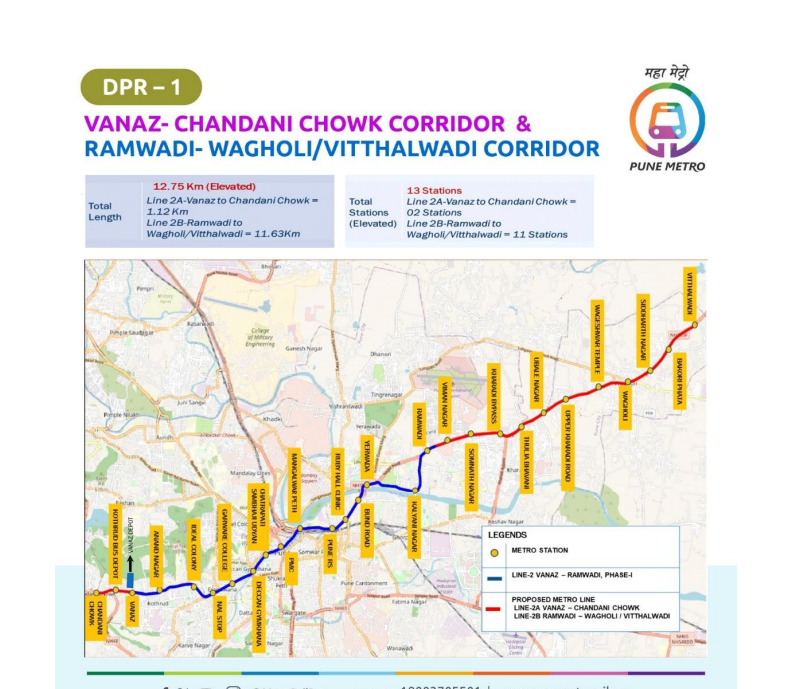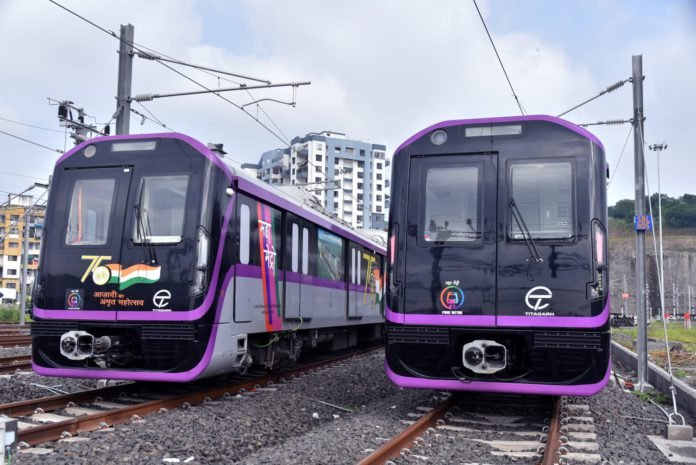PUNE (Metro Rail News): The Pune Metro Phase 2 has gained momentum following the approval of the central government, with a total estimated cost of Rs 3,626.24 crore. Phase 2 is a strategic extension of the existing Vanaz–Ramwadi corridor (Aqua Line) in both the eastern and western directions.
The proposal to extend the Aqua Line is in accordance with the Comprehensive Mobility Plan (CMP), which includes a metro line stretching from Chandani Chowk to Wagholi.
Approved Routes Under Phase 2
| Line | Approved Route | Length | Stations | Station Type |
| Aqua Line (Western Extension) | Vanaz to Chandani Chowk (Corridor 2A) | 1.12 km | 2 stations | Elevated |
| Aqua Line (Eastern Extension) | Ramwadi to Wagholi/Vitthalwadi (Corridor 2B) | 11.36 km | 11 stations | Elevated |
| Total | 12.75 km | 13 stations |
Phase 2 of the Pune Metro is projected to be developed at an estimated cost of Rs 3,626.24 crore over a duration of four years. The cost of the project will be borne equally by the Government of India, the Government of Maharashtra, and external bilateral/multilateral agencies.
Ridership Trends on the Entire Aqua Line After Commissioning of The Project
| Year | Projected Ridership |
| 2027 | 0.96 lakh |
| 2037 | 2.01 lakh |
| 2047 | 2.87 lakh |
| 2057 | 3.49 lakh |
The extensions of Pune Metro Line 2 are strategically planned to connect with IT hubs, commercial districts, educational institutions, and residential areas. This expansion is expected to increase the public transportation share and ridership across the network.

As part of a long-term comprehensive mobility plan, intercity bus services from cities such as Mumbai and Bengaluru will be integrated at Chandani Chowk, while services from Ahilya Nagar and Chhatrapati Sambhaji Nagar will be routed through Wagholi. These nodes will serve as multimodal transit hubs, which will increase accessibility to the Pune Metro network.
Maharashtra Metro Rail Corporation Limited (Maha-Metro) will serve as the implementing agency for the project. As of now, pre-construction activities, including topographical surveys and the appointment of detailed design consultants (DDC), are already underway.





